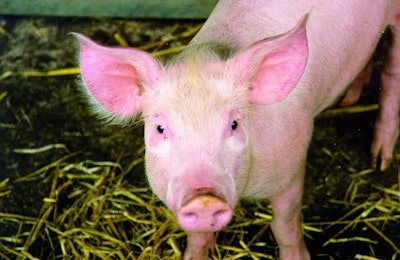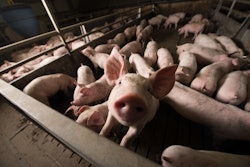
While the number of African swine fever (ASF) outbreaks in Europe’s domestic pigs passes 4,000 for the year so far, new cases in wild boar are confirmed in lower numbers but widely across the continent.
As of October 27, the total number of ASF outbreaks involving wild boar across Europe stood at 6,695. This is an increase of 190 compared with the previous edition of the Animal Disease Information System from the European Commission (EC; dated October 13). The System covers notifiable diseases in member states of the European Union (EU) and the majority of its immediate neighbors.
Twenty countries have registered one or more outbreaks through this system so far this year.
Over the whole of 2022, 15 European countries covered by the EC System registered a total of 7,442 outbreaks of ASF in wild boar.
To date in 2023, Poland has reported the most outbreaks in this category (2,389) — an increase of 54 since the previous edition of the System. Next highest totals are in Germany (852 outbreaks), Italy (820), Latvia (585), Slovakia (513), Hungary (363), Lithuania (333), and Romania (252).
Over the previous two weeks, 12 European states had registered more cases of ASF in wild boar with the EC. As well as the eight countries mentioned, there was a significant increase in Bulgaria (52), bringing the country’s total to 180 for the year so far.
At the end of August, first cases of ASF were detected in wild boar in Sweden. Since then, 53 animals have tested positive for the virus, according to the latest update from the national veterinary authority, SVA. Each of these wild boar was found in the originally designated core disease control area around the two of Fagersta in central-southern Sweden.
Around one month ago, constriction was started on a fence to surround the core area, SVA reports. Aiming to restrict movement of wild boar, an official said the barrier reduces the risk of new infections as well as stopping potentially infected animals from spreading the virus further afield.
Most new outbreaks in pigs in Balkan states
As of October 27, the total number of confirmed ASF outbreaks in domestic pigs stood at 4,073, according to the EC System.
For comparison, 12 European states registered a total of 537 outbreaks in this population with the EC during the whole of 2022. Of these, 60% of affected herds were in Romania.
While the number of countries with cases in backyard and commercial herds remains at 16, the total outbreaks has increased by 112 since the previous update dated October 13. Accounting for most of this jump is the Balkan region — 59 more outbreaks in Croatia, and 50 in Bosnia-Herzegovina.
Also registering the most outbreaks in domestic pigs with the EC so far in 2023 is Bosnia-Herzegovina, now with a total of 1,405. Following are Croatia (1,078), Serbia (762), and Romania (696). The next highest country total is Poland with 30 for the year to date.
Further ASF cases in domestic swine in Balkans
Over the past week, four states in Europe have officially reported further ASF outbreaks in their respective domestic swine populations.
Based on notifications to the World Organisation for Animal Health (WOAH), Croatia had the most new outbreaks — 35 in the period October 16-30. Directly impacting a total of 791 animals, affected premises included one farm with 310 pigs, and the rest were in herds of between one and 66.
Croatia’s first ever recorded ASF cases were detected at the end of June this year.
Worst affected county continues to be Vukovar-Srijem. This most northeastern county was the location of 31 of these latest outbreaks. Two of its municipalities recorded their first ASF outbreaks since June, bringing to 24 the number of this county’s 31 towns and districts with ASF cases so far. In addition, three of the latest outbreaks were in the adjacent county of Osijek-Baranja, and one in neighboring Brod-Posavina.
From Romania the veterinary authority has notified WOAH of three further outbreaks in domestic pigs.
Affected were a total of 53 animals in backyard herds in the south, southeast, and northeast of the country.
Russia, Ukraine register new outbreaks
While the EC system does not cover the disease situation in Russia, the national authority has notified WOAH about four ASF outbreaks in domestic pigs.
Most significant are two involving a total of around 118,000 animals in the region of Voronezh in mid-October.
Affected were premises with 45,609 and 72,270 swine at two premises in the same district apparently operated by the same company. Until these cases, this region of the Central federal district had been free of ASF for two years.
Following a 12-month hiatus, the ASF virus has been detected again in the Penza region of the Volga federal district.
According to a WOAH notification, some pigs in a backyard herd of 52 animals tested positive for the virus there at the end of last month.
Meanwhile, in the Volgograd region of the southern federal district, a second ASF outbreak has been confirmed. Directly involving 194 pigs, the non-commercial herd appears to be at a distance of more than 100km from a previous outbreak, which started one week previously.
In the north Ukrainian oblast of Kiev, one pig tested positive for the ASF virus at the end of October, according to the WOAH report.
View our continuing coverage of the global African swine fever situation.

















